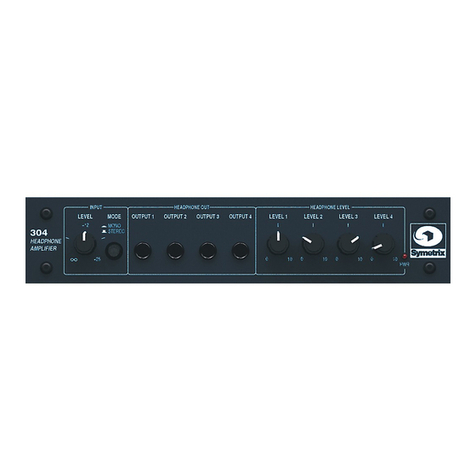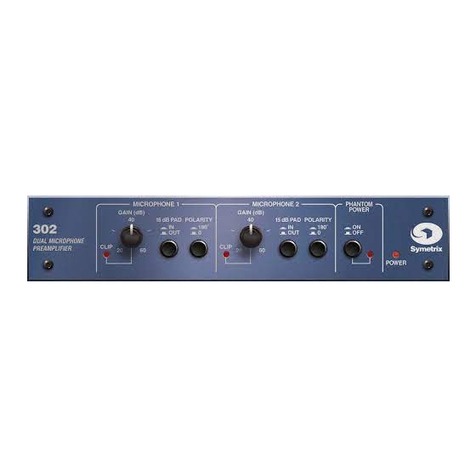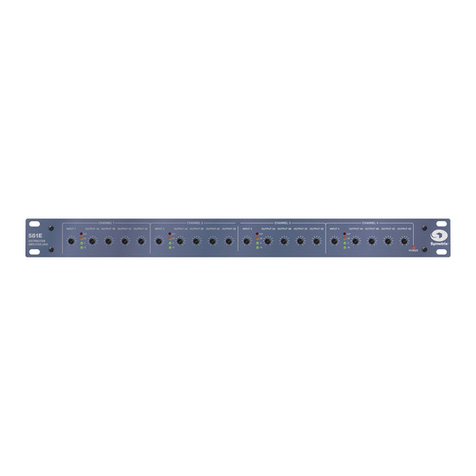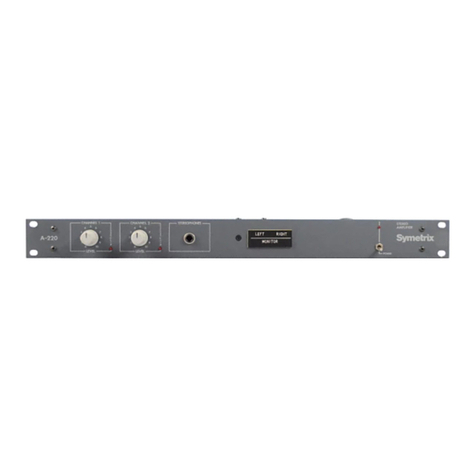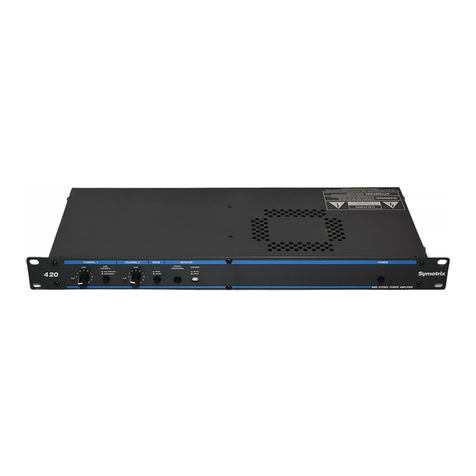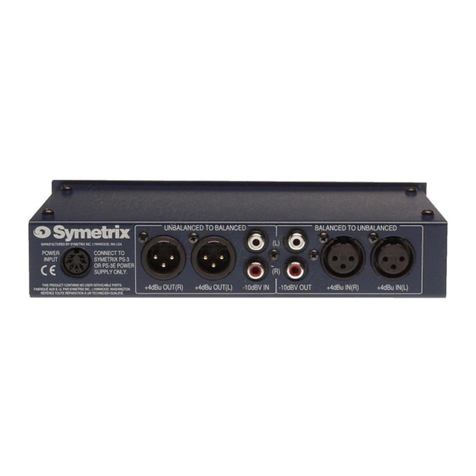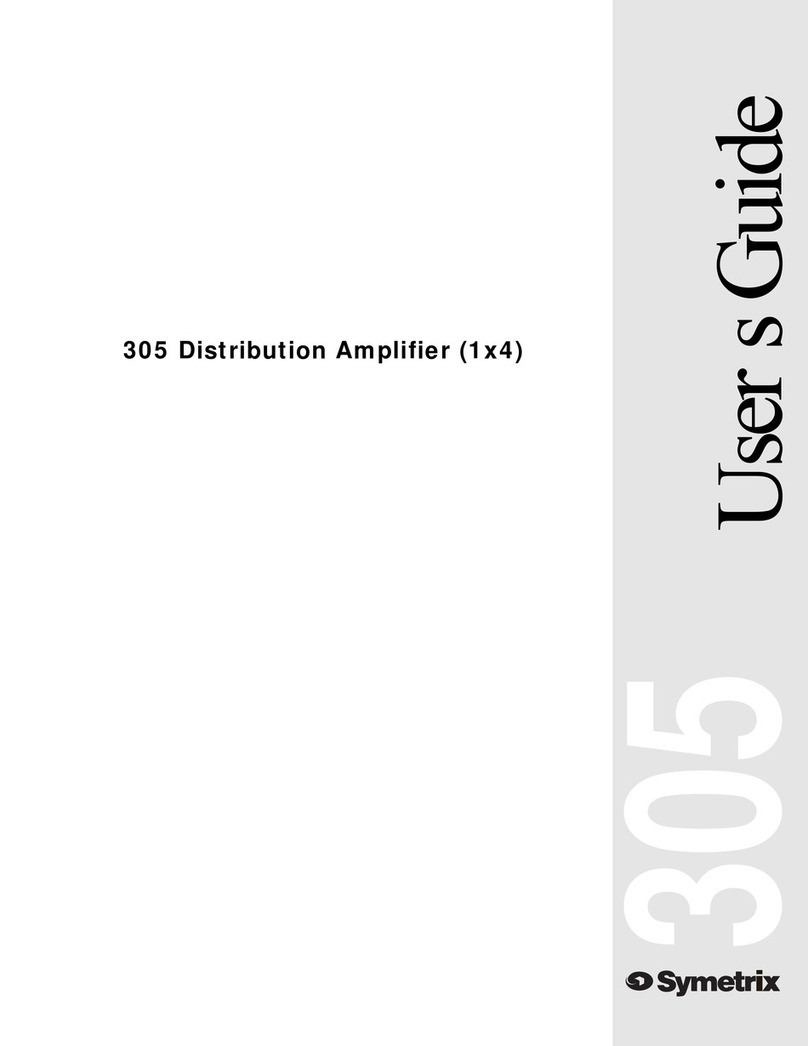
2-2 Rev 1.0, 5/1/94
internal protection circuitry. Without protection circuitry, or at least some sort of current
limiting, lower load impedances mean increasing current, and upon exceeding the amplifier's
maximum current rating, smoke as the unit self-immolates.
For solid-state amplifiers, operating without any load connected or with a load whose
impedance is higher than the amplifier's rated minimum is harmless. Of course, there is a
price, and that price is diminished power output. As the load impedance doubles, output power
halves (this is a best-case scenario and depends on actual circuit design). Thus, an amplifier
having a 50-watt, 8-ohm, power rating would only deliver 25 watts into a 16-ohm load.
Since output power increases as load impedance decreases (assuming that the voltage remains
the same or nearly the same), operating an amplifier into the lowest possible impedance results
in the maximum power output. Taking this to its illogical conclusion, an amplifier capable of
delivering 20 volts into any load impedance would deliver 50 watts into an 8 ohm load. This
same amplifier would deliver 800 watts into a 0.5-ohm load. Obviously, you can’t do this to
most (99%) amplifiers. The limiting factor is the maximum current that the amplifier can
deliver. At 8 ohms, 50 watts corresponds to 2.5 amps. At 0.5 ohms, 800 watts (20V into 0.5
ohms) corresponds to 40 amps! The minimum load impedance is just another way of stating an
amplifier’s maximum current output.
Operating a solid-state amplifier below its rated minimum load impedance can do anything
from nothing (if the amplifier is well protected and/or extremely underrated) to triggering
smoke alarms. A good rule-of-thumb is DON'T operate any amplifier below its rated minimum
load impedance.
The minimum load impedance of the 420 is 4 ohms in stereo or dual-mono mode and
8 ohms in mono-bridged mode.
2.3 Mono-Bridged Operation
Mono-bridged operation is a common method of increasing the power delivered to the load.
Bridging requires two amplifier channels and for many amplifiers (but not the 420) translates
into either four times the power of a single channel into the same impedance or twice the
single-channel power into twice the impedance.
Using two amplifier channels to drive both sides of the load simultaneously (usually, one side
of the load is grounded) increases the voltage developed across the load. Paralleling the inputs
and connecting the load across the two output channels doesn’t work because both ends of the
load are driven in the same direction; there is no voltage across the load. Leaving the output
connections alone and inverting the polarity of one amplifier channel causes one end of the
load to swing positively, the other end swings negatively. Thus, the voltage across the load is
twice what it would be if the load had one side grounded, which results in four times the power
(since the power increases in proportion to the square of the voltage).
As far as the amplifier is concerned, each channel drives an equivalent load equal to one-half of
the load impedance. An 8 ohm load, connected across the two amplifier channels results in
each amplifier channel seeing the equivalent of a 4-ohm load.
Few users recognize the fact that neither side of the load is grounded when you mono-bridge a
stereo amplifier. This means that if you use TS (tip-sleeve) phone plugs for speaker connectors
(and lots of folks do), the shell of the plug, which is usually grounded, is not grounded. If the
plug should come in contact with a microphone (perhaps via its stand...) it is quite possible for
the entire sound system to immediately oscillate, usually at full power, which is not healthy for
loudspeakers and living things.
If you operate any amplifier in mono-bridged mode, take steps to ensure that neither of
the output connections can come in contact with ground, themselves, or anything else.
